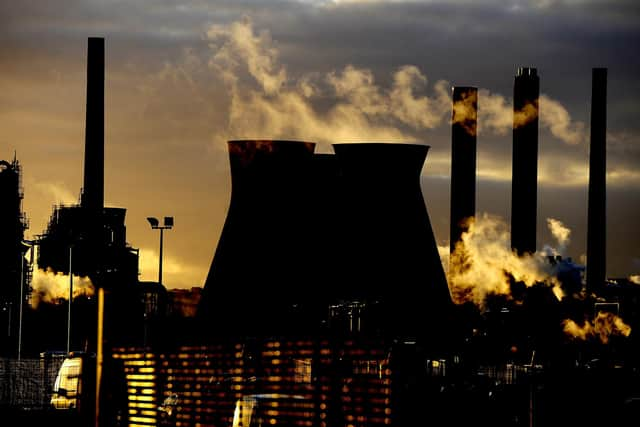Century in the spotlight: History of Grangemouth refinery 1924 to 2023
and live on Freeview channel 276
Grangemouth Refinery commenced operation in 1924 as Scottish Oils – later becoming BP – on a site adjacent to Grangemouth Docks to facilitate the import by ship of Middle East crude oils for feedstock.
Operating from 1924 to 1939, the Second World War and the resulting lack of crude feedstock imports, forced it to shut down until 1946. When operations started up again the refinery underwent a number of major expansion programmes.
Advertisement
Hide AdAdvertisement
Hide AdThis included BP teaming up with a new company – British Hydrocaron Chemicals Ltd – in 1947. Located adjacent to the existing BP Grangemouth refinery, the firm’s petrochemical plant was the first one of its kind in Europe when it was commissioned in 1951.


During the rock ‘n’ roll years of the 1950s the Grangemouth refinery was connected to the Finnart Oil Terminal at Loch Long on the west coast of Scotland by a 58-mile long pipeline.
From 1952 onwards this allowed the import of crude oil via deep-water jetty, which supported the use of larger oil tankers.
BP's operations at Grangemouth increased and expanded through the swinging sixties in order to meet the growing demands for both petrochemicals and fuels.
Advertisement
Hide AdAdvertisement
Hide AdThis expansion reached new levels with the discovery of oil in the North Sea and resulted in the commissioning of the Kinneil Crude Oil Stabilisation terminal, which
connected directly into the Forties pipeline system;
In 2004 BP decided to divest its worldwide olefins and derivatives business and sold off the Grangemouth refinery and connected petrochemicals complex.
A year later the new company created to run this business was named Innovene, which later in 2005 was purchased by Ineos, the UK’s largest privately owned
chemicals company.
Following a variety of ups and downs – including a bitter strike in 2013 – Ineos announced the ”mothballing” of the oldest of the three Crude Oil Distillation Units, and its
Advertisement
Hide AdAdvertisement
Hide AdFluid Catalytic Cracking Unit, in November 2020 and the loss of 200 jobs, around a third of the permanent workforce.
Bringing things right up to date this week, Ineos announced that over the next 18 months the refinery would undergo a number of projects to transform it from a
manufacturing site into an oil terminal, for the import, storage and distribution of a range of fuels.
Ineos cited the infeasibility of continuing to operate as a profitable going concern, under the multiple pressures of over-capacity in the North-West Europe market, the
Advertisement
Hide AdAdvertisement
Hide Adongoing demand destruction for road fuel from the electrification of road vehicles, compounded by the high cost of manufacturing in the UK.
Completion of the transformation is planned to occur around 2025, with commencement of terminal operations between then and 2027.
This will be accompanied by shutting down all of the refinery operating plants, plus a significant number of redundancies, and would also impact Finnart Oil Terminal and Kinneil.